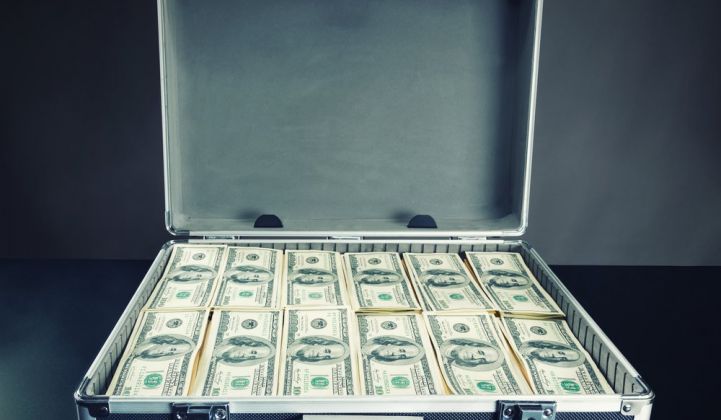It’s easy to commit to a goal without binding targets, especially when it’s with an entity that will only be around for the next 18 months.
That was the situation in June when a range of investors committed more than $4 billion in capital at the White House Clean Energy Investment Summit to scale up investment in clean-energy companies and address climate change.
Even with the best of intentions, the reality is that the issues limiting private investment in this sector are complex. They cannot be hashed out at a one-day summit. But it's a start.
At a follow-up event in Washington, D.C. this week, government officials and private investors met to discuss next steps that will be taken during the remainder of the Obama administration.
A group of long-term investors thinking deeply about this issue has launched a new initiative called the Aligned Intermediary (AI). At the helm is Peter Davidson, the former executive director of the loan programs office at the U.S. Department of Energy. The board brings together private financiers, philanthropists and academics.
“Many have talked about how hard it is for those institutions to deploy capital [to clean technologies],” said Davidson. “They need something, but they don’t know exactly what that something is.”
AI is dedicated to figuring out what that something is. The group will start with five foundations and about $1.2 billion in capital. The institutions are those that committed the initial capital at the Clean Energy Investment Summit in June: University of California, New Zealand Superannuation Fund, Alaska Permanent Fund, TIAA-CREF and family office Tamarisc. The group will focus on energy, water, agriculture and waste investment.
To start out, AI will operate as part of the PRIME Coalition, a new nonprofit that seeks to help foundations make direct investments to address climate change. Davidson said AI will “work deeply” with each investor to tailor a solution for them. Ideally those solutions will be scalable across each class of investor.
There is a real need to help each entity, whether a pension fund, family office or sovereign wealth fund, perform deal analysis. Another issue, said Davidson, is simply bringing these organizations into the deal flow.
“There are a lot of people who could be investors in climate mitigation deals,” he noted. “But nowhere is all that information put together into an ecosystem.” For family offices and foundations, another group, CREO Network, was launched earlier this year to help bring together people to get deals done.
Davidson sees his new role as the perfect extension of his work at the DOE loan office. To be eligible for DOE loans, the technology had to be new, and the loans were only issued when a private player was also putting some money on the table.
“It was huge amounts of money,” he said, “but no matter how much money government is putting in, it’s not the $40 trillion needed to decarbonize our economy.” Additionally, AI will not be limited to new technologies.
Even with a wider mandate, it’s a long way to mobilizing trillions of dollars. For now, AI is still identifying the major barriers and also figuring out what type of organization it should morph into. Davidson said AI will create a separate entity in early 2016 that is best suited to be the intermediary to keep deal flows going.
“There’s urgency in what we’re doing,” said Davidson. “We need a massive amount of capital. And the only place to get it is among these long-term investors.”



